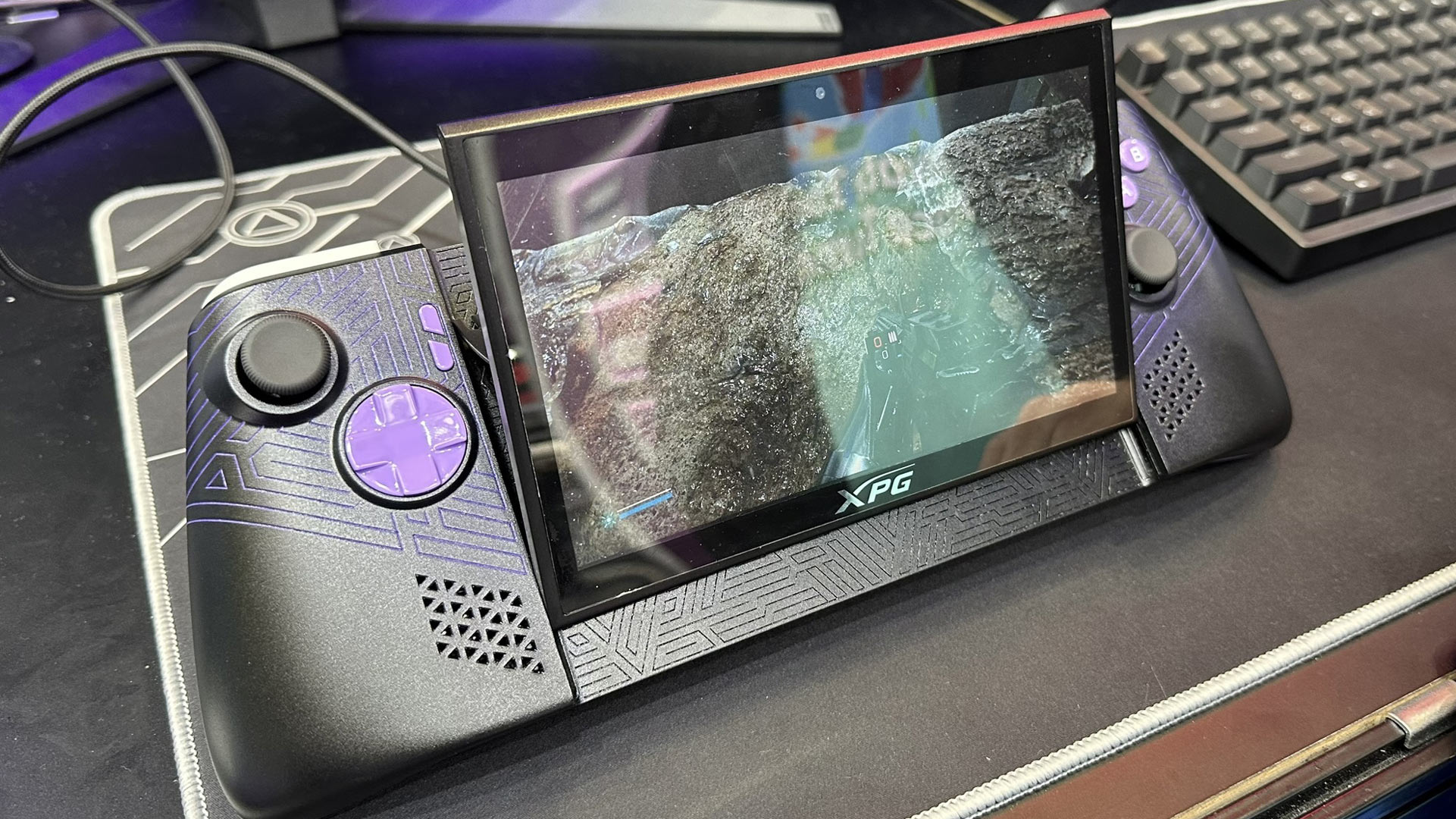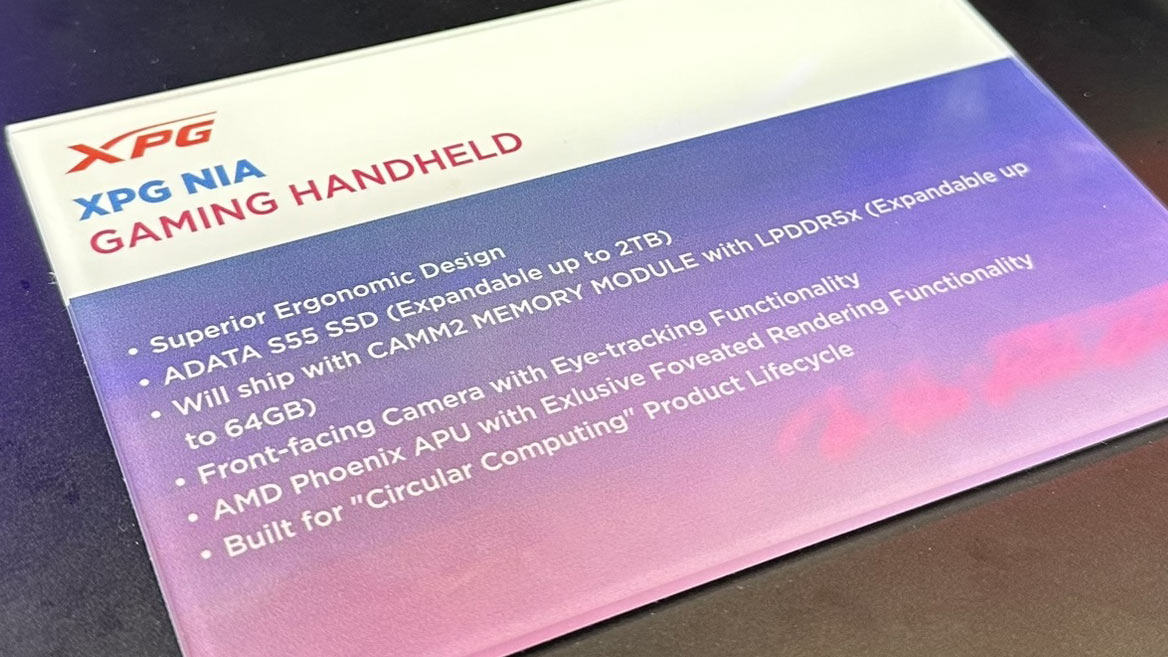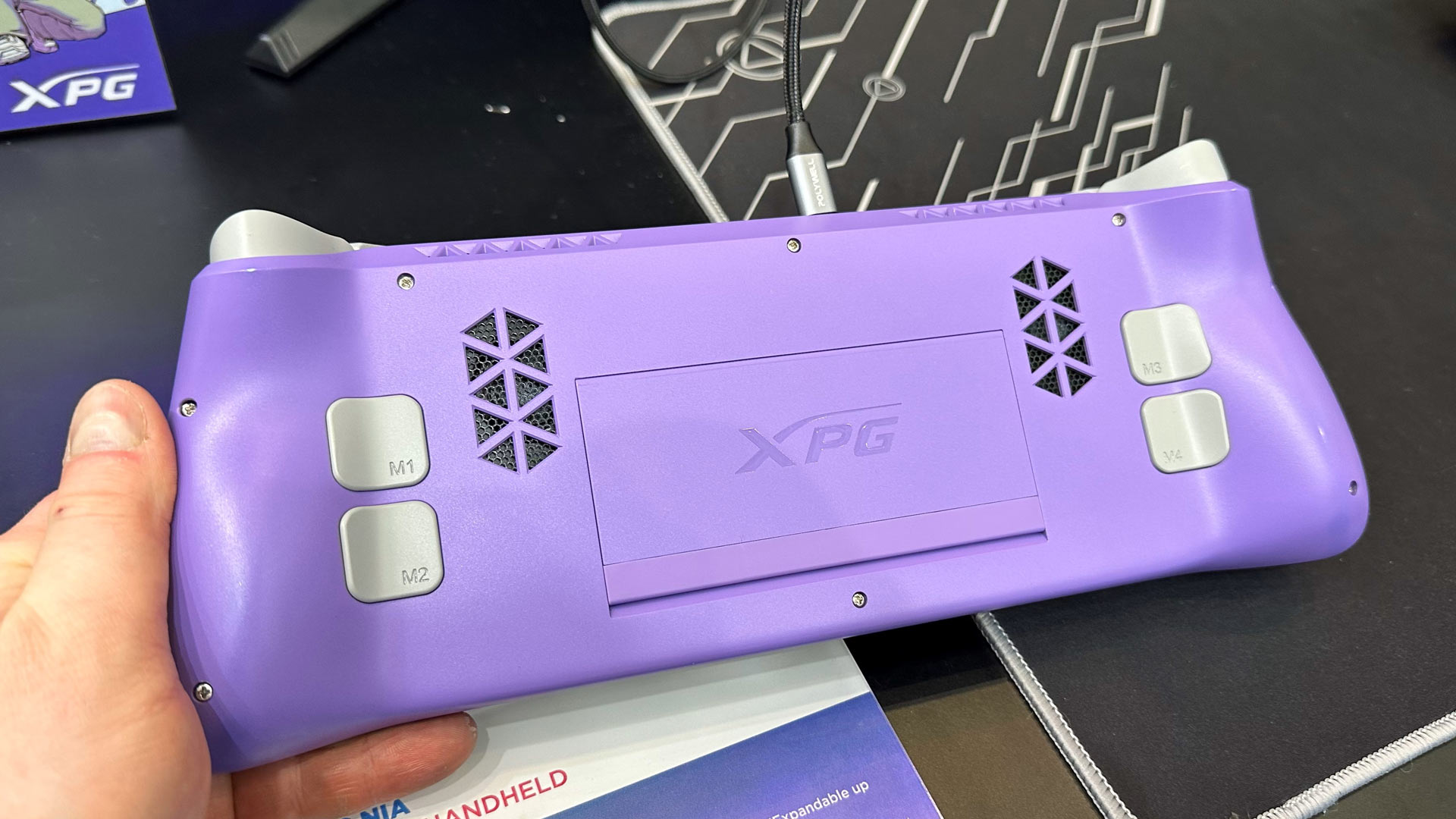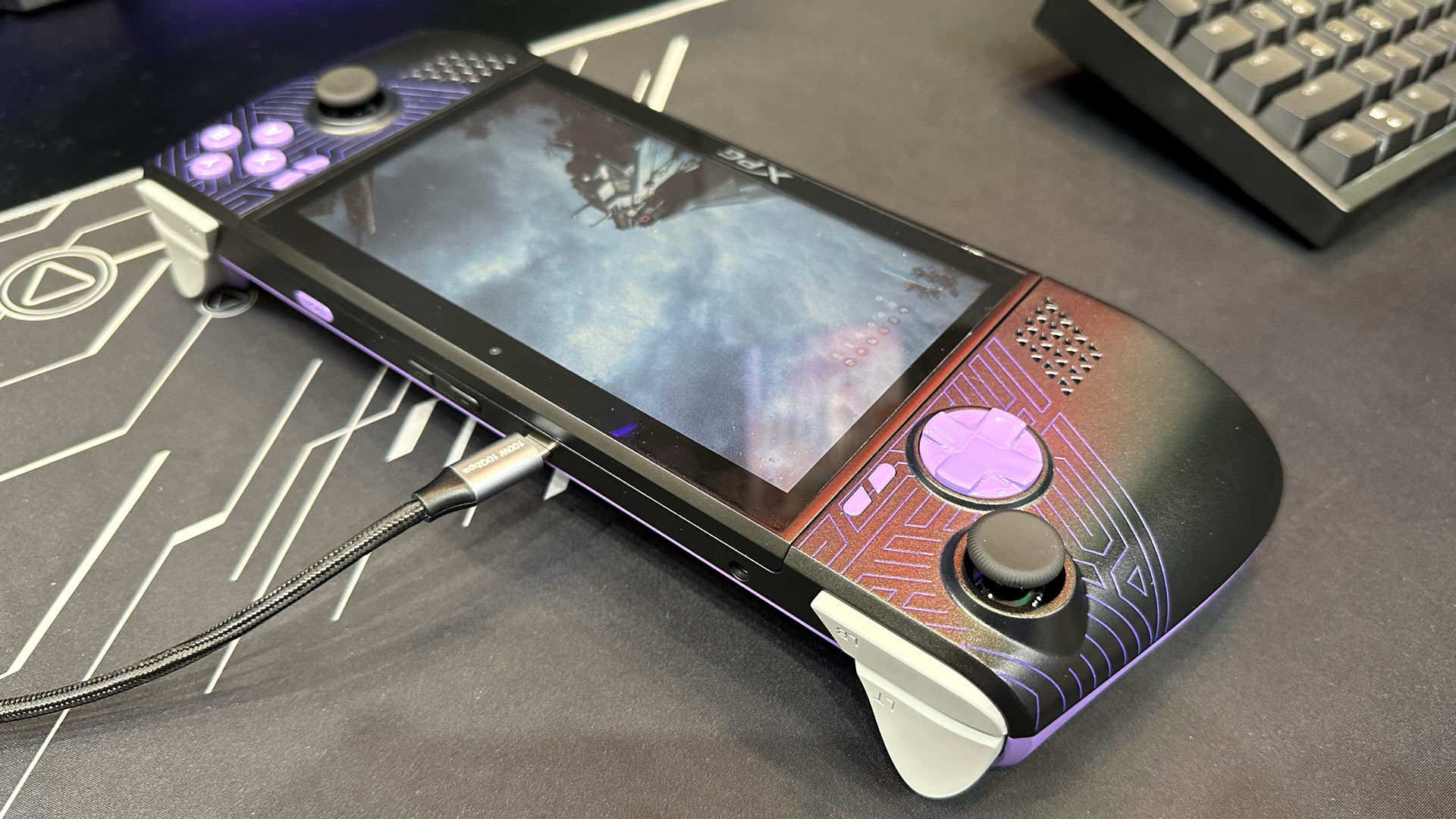
From its Computex booth, Adata looks set to jump on the handheld PC gaming bandwagon with a new device called the XPG Nia. It is becoming a crowded market, with players jostling to herald their winning take on the handheld formula. Adata’s special sauce is to offer both upgradable RAM and storage in its handheld – a first for the industry. Further appeal comes from Adata’s AMD Phoenix handheld featuring a Windows Hello camera, and a tilting screen which can boost system cooling.

Owners of the Adata XPG Nia can expand the memory up to 64GB using one of the shiny new CAMM2 form factor modules, we have seen so much of at Computex 2024. It isn’t clear what configuration the Nia will ship with, but it is nice to have the ability to upgrade.
In a similar vein, the XPG Nia’s storage configuration is flexible. A back panel can be easily removed, for access to both the RAM and SSD. There appears to be only a single slot for SSDs, just like competitor devices, and here Adata will supply one of its own S55 M.2 2230 drives (up to 2TB).

Adata has used a sliding tilt screen mechanism in the XPG Nia. This should deliver better ergonomics, and there is a further benefit as moving the screen to tilt mode exposes more cooling vents.
Demo units of the Nia came with Windows 11, and this could use the built-in webcam as a Windows Hello biometric security device. The camera is also intended to add to the gaming experience, with eye tracking backed by Eyeware of Switzerland.
Adata touts the XPG Nia as especially ergonomic, and it looks quite chunky, which is usually good for adult hands. The tilting screen is also good for ergonomics, as may be the built-in kickstand.
Going even further with ergonomics, Adata’s ‘Circular Computing’ initiative would be important. As part of this plan, Adata is making the XPG Nia a welcoming system for modders, and things like 3D printing file sources will be open so users can remodel cases, triggers etc. This initiative will also come into play later in the product’s life, when it is hinted motherboard upgrades may be available, and users can re-use discarded motherboards in other projects – given full specs, diagrams, pinouts, etc from Adata.

With some competitors already launching AMD Ryzen 8040 (Hawk Point) handhelds, readers may be puzzled about Adata sticking to Ryzen 7040 (Phoenix) APUs. Part of it is down to the XPG Nia still being a work in progress, another part might be Adata’s intention to deliver the XPG Nia at a very keen price – between $500 and $600.
To get to its desired pricing bracket, Adata will likely sell direct, and may also set up a Kickstarter to gauge support and interest in various processor / configuration options.







